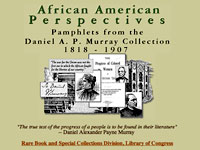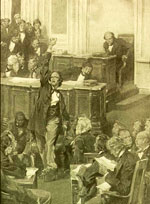The Emancipation Proclamation
According to the Gilder Lehrman website, "Henry L. Luce Professor of the Civil War Era and Professor of History at Gettysburg College Allen Guelzo examines Abraham Lincoln's motivations for issuing the Emancipation Proclamation in January of 1863. Guelzo contends that the proclamation is among the most misunderstood of the Civil War era, a necessary and even desperate attempt by Lincoln to enact a form of emancipation that would pass legal muster. Guelzo traces the evolution of Lincoln's views on emancipation with particular emphasis on the strategic and moral calculus that factored into the momentous proclamation of 1863."

